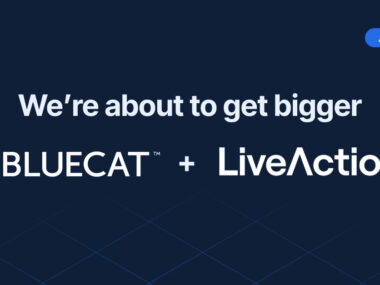What CIOs can Learn from San Francisco’s Incredible Sinking Tower
I couldn’t help but chuckle today reading that Joe Montana, the *second greatest NFL quarterback of all time (ahem, Brady) is the latest person to sue the developer of San Francisco’s Millenial Tower.

Adaptive DNS offers CIOs a Foundation for Digital Transformation
I couldn’t help but chuckle today reading that Joe Montana, the *second greatest NFL quarterback of all time (ahem, Brady) is the latest person to sue the developer of San Francisco’s Millenial Tower. If you’re unfamiliar, Millenial Tower is the infamous luxury property that has sunk more than 16 inches since it was built seven years ago – and has recently started to lean to the northwest. Joe is just one of many worried residents of this gleaming high-rise that want their money back. Meanwhile, city officials are scrambling to find a solution, which may include – of all things – removing the top twenty floors to reduce weight.
This is batshit crazy. How is it even possible that a 58-story building in one of the most expensive real estate markets in the world can be constructed on ‘challenging soil and a deficient foundation’?
I am neither a real estate developer nor a CIO, but this got me thinking about how they face similar challenges in developing a secure, stable foundation upon which to build their vision. They need to get to bedrock.
BlueCat’s Andrew Wertkin explains why Adaptive DNS is the foundation for IT transformation
CIOs face unprecedented forces of change. Among them are new business demands and new engagement models that are driving digital transformation. They need to react with speed and innovation. The old model of ponderous, project-based engagement is gone, replaced by a more flexible IT-as-a-service model that business users interface with to access the resources they need, when they need it.
Digital transformation is a towering challenge, one that requires a modern foundation. CIOs need the kind of infrastructure that can live up to demands being placed on it.
All too often, that foundation is deficient. It’s based on legacy DNS technology – the technology that connects any device to a network to access compute. Frankly, it’s a technology that many CIOs take for granted. But even if they did spend the time to dig in, they might not like what they see. DNS infrastructure is often brittle, built over time with open source or outdated Microsoft technology. It is managed manually, server by server, in disparate organizations that are tribal in nature, especially in large, complex enterprises.
Eventually that DNS infrastructure becomes corrupt. Zones are manually copied to other servers, forwarders are used as expedient band-aid solutions. In this environment, a single change can take days if not weeks, by multiple people in multiple locations. There’s no common controller that can make services available in seconds.
That’s where Adaptive DNS comes in. Adaptive DNS restores the foundation with a centralized controller that ensures all DNS data is correct. Adaptive DNS uses a single representation of authoritative data, organized in the way the business needs it, accessible when they need it.
Adaptive DNS is fully automated, with the right kind of APIs that can be accessed rapidly by the business. This automation abstracts away the underlying DNS technology, leaving business users to consume the service as needed to pursue critical business initiatives, like cloud migration, security or IoT.
Finally, Adaptive DNS gives organizations access to a treasure trove of data that can be mined for security, behavioral and strategic marketing purposes. In particular, DNS data can be a powerful new cyber defense tool, giving the CIO the ability to both detect data breaches and respond quickly to limit damage.
The benefits of Adaptive DNS are profound. For the largest of businesses, it offers a striking departure from a world where hundreds or thousands of far-flung servers are managed in isolation to one in which they are managed centrally by experts. This not only reduces the burden and cost to manage critical infrastructure, but it makes IT more agile and responsive, freeing up resources to take on other initiatives.
In short, Adaptive DNS is much more than just DNS. So it’s much more than just a foundation. Think of hundreds or thousands of business users interacting with and consuming DNS services independently, just as they consume cloud applications and services every day. That movement to self-service through automation is not just what fuels business transformation, it is business transformation. It is the aspirational vision of a modern, agile IT function that so many CIOs are working toward. It’s the gleaming tower.




